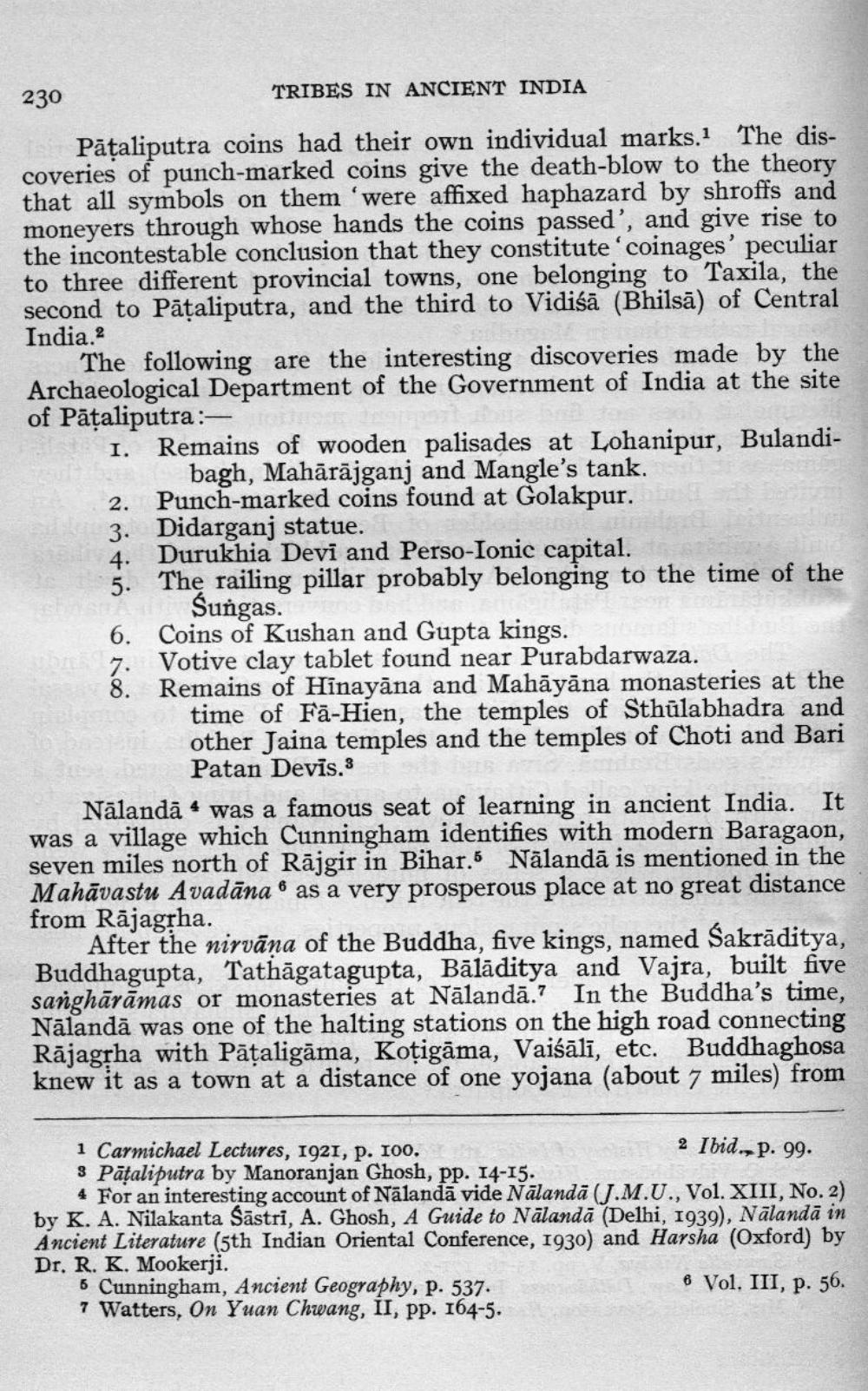________________
230
TRIBES IN ANCIENT INDIA Pātaliputra coins had their own individual marks. The discoveries of punch-marked coins give the death-blow to the theory that all symbols on them 'were affixed haphazard by shroffs and moneyers through whose hands the coins passed', and give rise to the incontestable conclusion that they constitute coinages' peculiar to three different provincial towns, one belonging to Taxila, the second to Pāțaliputra, and the third to Vidiśā (Bhilsā) of Central India.2
The following are the interesting discoveries made by the Archaeological Department of the Government of India at the site of Pāțaliputra :I. Remains of wooden palisades at Lohanipur, Bulandi
bagh, Mahārājganj and Mangle's tank. 2. Punch-marked coins found at Golakpur. 3. Didarganj statue. 4. Durukhia Devi and Perso-Ionic capital. 5. The railing pillar probably belonging to the time of the
Sungas. 6. Coins of Kushan and Gupta kings. 7. Votive clay tablet found near Purabdarwaza. 8. Remains of Hīnayāna and Mahāyāna monasteries at the
time of Fā-Hien, the temples of Sthūlabhadra and other Jaina temples and the temples of Choti and Bari
Patan Devis. 3 Nalanda 4 was a famous seat of learning in ancient India. It was a village which Cunningham identifies with modern Baragaon, seven miles north of Rājgir in Bihar. Nālandā is mentioned in the Mahāvastu Avadāna 6 as a very prosperous place at no great distance from Rājagrha.
After the nirvana of the Buddha, five kings, named Sakrāditya, Buddhagupta, Tathāgatagupta, Bālāditya and Vajra, built five sanghārāmas or monasteries at Nālandā.? In the Buddha's time, Nālandā was one of the halting stations on the high road connecting Rājagțha with Pāțaligāma, Koţigāma, Vaiśālī, etc. Buddhaghosa knew it as a town at a distance of one yojana (about 7 miles) from
1 Carmichael Lectures, 1921, P. 100.
2 Ibid., p. 99. 3 Pātaliputra by Manoranjan Ghosh, pp. 14-15.
4 For an interesting account of Nalandā vide Nālandā (1.M.U., Vol. XIII, No. 2) by K. A. Nilakanta Sāstri, A. Ghosh, A Guide to Nālandā (Delhi, 1939), Nālandā in Ancient Literature (5th Indian Oriental Conference, 1930) and Harsha (Oxford) by Dr. R. K. Mookerji. 6 Cunningham, Ancient Geography, p. 537.
8 Vol. III, p. 56. 7 Watters, On Yuan Chwang, II, pp. 164-5.




